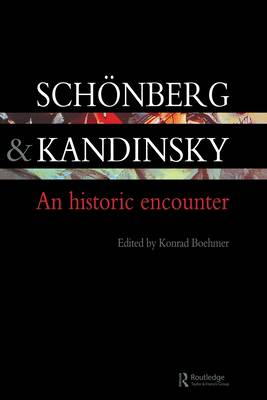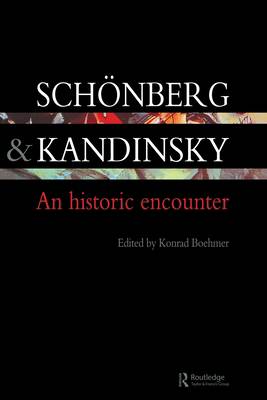
- Afhalen na 1 uur in een winkel met voorraad
- Gratis thuislevering in België vanaf € 30
- Ruim aanbod met 7 miljoen producten
- Afhalen na 1 uur in een winkel met voorraad
- Gratis thuislevering in België vanaf € 30
- Ruim aanbod met 7 miljoen producten
€ 111,45
+ 222 punten
Omschrijving
The historic encounter around 1911 between the composer Arnold Schönberg and the painter Wassily Kandinsky occurred at a moment when the first wild revolts against traditional art, Dada and Futurism, had just manifested themselves. Independently of those sometimes spectacular activities, both Schönberg and Kandinsky had already concluded that the material and the compositional methods they had relied on in the past were exhausted and did not satisfy the development of their artistic ideas. Both artists had already submitted their modes of production to a critical analysis which resulted in Schonberg's Theory of Harmony and Kandinsky's Concerning the Spiritual in Art, both of 1911 - indeed the two artists had already been putting their self-criticism into practice for some time. In Schönberg's case this led to breaking with tonality; Kandinsky effected the transition to abstract painting. This book is a collection of the papers presented at the conference on Schönberg and Kandin
Specificaties
Betrokkenen
- Uitgeverij:
Inhoud
- Aantal bladzijden:
- 242
- Taal:
- Engels
- Reeks:
Eigenschappen
- Productcode (EAN):
- 9789057020476
- Verschijningsdatum:
- 6/05/1998
- Uitvoering:
- Paperback
- Formaat:
- Trade paperback (VS)
- Afmetingen:
- 156 mm x 234 mm
- Gewicht:
- 344 g

Alleen bij Standaard Boekhandel
+ 222 punten op je klantenkaart van Standaard Boekhandel
Beoordelingen
We publiceren alleen reviews die voldoen aan de voorwaarden voor reviews. Bekijk onze voorwaarden voor reviews.









